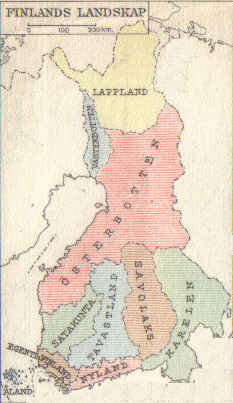Historical provinces of Finland
|
|
The historical provinces (Finnish: maakunta, Swedish: landskap) of Finland is a legacy of the country's joint history with Sweden. The provinces ceased to be an administrative entity already in 1634 when they were superseded by the Counties, a reform which remained in force in Finland until 1997. The provinces remain as a tradition but have no administrative function today.
Heraldry
At the funeral of King Gustav Vasa in 1560 the coats of arms for the provinces were displayed together for the first time and several of them had been granted for that particular occasion. After the separation of Finland from Sweden in 1809 the traditions for the provincial arms has somewhat diverged. Finland maintains the distinction between Dukal and Countal dignity shown in the coronets for arms of the historical provinces while all the Swedish provinces carry the Swedish style Dukal coronet since 1884. The division of Lapland also necessitated a distinction between the Finnish and the Swedish coats arms.
The coats of arms of the historical provinces has served as a basis for the arms of newer administrative divisions.
Provinces
First name in the parentheses is the Finnish name and the second is the Swedish.
|
|
A narrow strip of pre-1809 Westrobothnia stretched across to the eastern side of Torne River and fell within Finland's borders.







